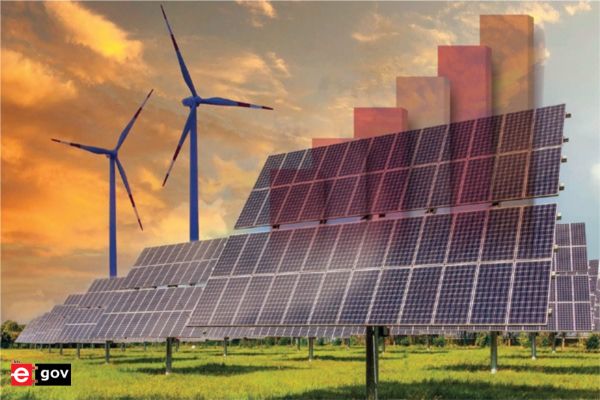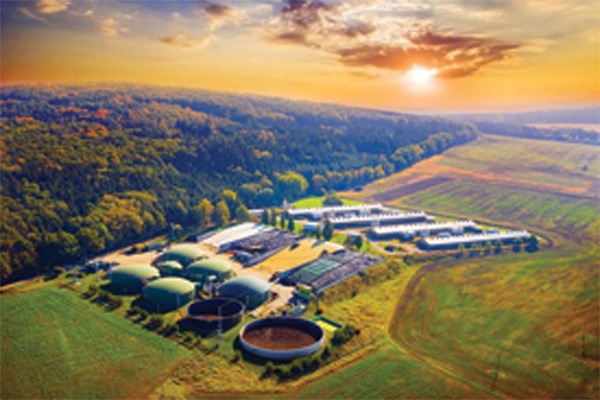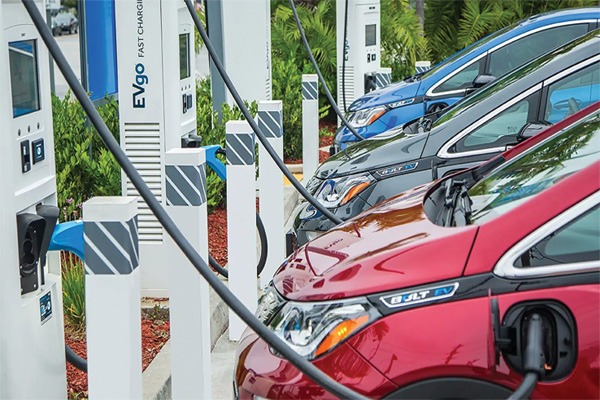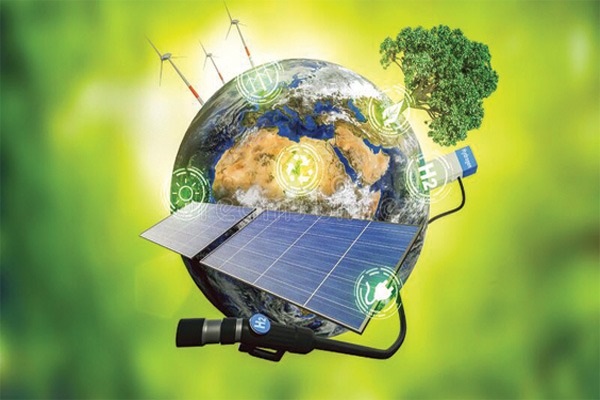
Punjab’s energy sector is undergoing a remarkable transformation with a shift towards renewable energy sources. The state’s commitment to increasing its renewable energy capacity and reducing its reliance on fossil fuels is commendable. With continued efforts and investments, Punjab has the potential to become a model for other states in India and contribute significantly to the country’s sustainable energy future, writes Abhineet Kumar of Elets News Network (ENN).
The energy sector in Punjab has been undergoing a significant transition in recent years. Punjab, known as the “Granary of India,” has traditionally been reliant on agriculture, but it is now embracing renewable energy sources to meet its growing energy demands and reduce its carbon footprint.
The state government has implemented various policies and initiatives to promote the use of renewable energy. Punjab has set an ambitious target of generating 21% of its total power capacity from renewable sources by 2030. To achieve this goal, the state has been actively encouraging the installation of solar power projects, particularly rooftop solar panels on residential and commercial buildings. These initiatives have helped Punjab emerge as a leading state in terms of installed solar capacity.

Currently, Punjab has a diversified energy mix that includes thermal power plants, hydroelectric projects, and renewable energy sources. Thermal power plants, primarily coal-based, have been the backbone of Punjab’s energy generation. However, there has been a concerted effort to reduce the dependence on fossil fuels and promote cleaner alternatives.
The state government has also taken measures to improve energy efficiency in industries, agriculture, and public infrastructure. These measures include the implementation of energy-efficient technologies, promoting energy audits, and raising awareness about energy conservation practices.

Punjab’s energy transition has not only been helping in reducing greenhouse gas emissions but also in creating job opportunities and attracting investments in the renewable energy sector. The state has witnessed a significant increase in the number of solar power projects, both large-scale and decentralised, contributing to the overall development of the energy sector.
Diversification of Renewable Energy Mix
Punjab has made significant strides in renewable energy generation, with a particular focus on solar power, compressed biogas, and biomass power. These clean energy sources have emerged as crucial contributors to the state’s energy mix, promoting sustainability, reducing carbon emissions, and fostering economic growth.

Solar Power – Solar power has witnessed remarkable growth in Punjab. The state has abundant sunshine throughout the year, making it an ideal location for solar installations. The government has implemented various initiatives and policies to encourage solar power
development, such as subsidies and net metering regulations. Large-scale solar parks and rooftop solar installations have proliferated across the state, leading to a substantial increase in solar energy capacity. This has not only provided clean electricity but also contributed to job creation and enhanced energy security.
Solar Floating Panel – Solar floating panels have emerged as an innovative solution in Punjab, harnessing the abundant sunlight and conserving valuable land resources. These panels, installed on water bodies like reservoirs and lakes, generate clean and sustainable energy. By utilising unused water surfaces, they contribute to increased solar energy production and reduce water evaporation. The implementation of solar floating panels in Punjab not only promotes renewable energy but also ensures efficient land utilisation and conservation of water resources, making it a promising step towards a greener and more sustainable future for the region.
“We need to increase our pace in terms of clean energy technologies and usage of renewable energy. The cost of land is quite high in Punjab, so we have decided to install floating solar panels in order to harness more solar energy,” writes H.S.Hanspal, Chairman, Punjab Energy Development Agency
Compressed Biogas Plant – Another emerging source of renewable energy in Punjab is compressed biogas (CBG). Punjab has a rich agricultural sector, and CBG plants utilise agricultural waste, such as crop residue, to produce biogas. This biogas is then purified and compressed to produce CBG, which can be used as a substitute for fossil fuels in transportation and other sectors. CBG projects not only help in reducing agricultural waste burning, a significant contributor to air pollution, but also provide an additional income source for farmers. The government has been actively promoting CBG production
by offering financial incentives and establishing CBG plants across the state.
Asia’s Biggest CBG Plant in Punjab

The benefits of the Sangrur CBG plant for rural economy stems from the fact that this plant will consume 100,000 tons of paddy straw, which will be procured from 6-8 satellite locations within a 10 km radius of the plant. There shall be daily production of about 600-650 Tons of FOM (Fermented Organic Manure), which can be used for organic farming. The CBG Plant shall also provide direct employment to 390 and indirect employment to 585 people.
Sumeet Jarangal, the Chief Executive Officer of Punjab Energy Development Agency, stated that Punjab is an agricultural-dominated economy and they produce approximately twenty million tons of biomass. He further mentioned that currently, in Punjab, fifteen million tons of biomass are not utilised and are instead burned by farmers due to the absence of alternative options, as they are compelled to opt for multi-crops. According to him, the solution discovered in Punjab involves the conversion of this biomass into power. He also highlighted the introduction of a new project in Punjab, namely the establishment of a compressed biogas plant, which consumes thirty-three tons per day and generates compressed biogas.
Therefore, not only will this plant generate additional income for Sangrur’s farmers, but it will also provide a much-needed alternative to stubble burning. The Plant will reduce stubble burning of 40,000 – 45,000 acres of fields, translating into an annual reduction of 150,000 tons of CO2 emissions, which will not only ensure that the citizens of Sangrur, Punjab, breathe in cleaner air but also contribute towards India’s COP26 Climate Change targets of total projected carbon emissions by one billion tonnes from now to 2030 Achieving the target of net zero emissions by 2070.
Wind energy – Wind energy in Punjab has emerged as a promising source of renewable power. With its favourable geographical location and strong wind resources, Punjab has tapped into the potential of wind farms. These wind farms, equipped with modern turbines, generate clean and sustainable electricity, reducing carbon emissions and dependence on fossil fuels. The state government has actively promoted wind energy projects, attracting investments and boosting the economy. Punjab’s commitment to harnessing wind power contributes to a greener future, fostering environmental sustainability and energy independence for the region.
The adoption of solar power, compressed biogas, and Wind energy in Punjab signifies a commitment to clean and sustainable energy solutions. These renewable sources not only help in reducing greenhouse gas emissions but also provide economic opportunities and improve energy access.
Technological Solutions
Technology-driven initiatives have been pivotal in promoting energy efficiency in Punjab. Smart grids, advanced metering systems, and real-time energy monitoring have enabled effective management and optimization of electricity consumption. These technologies provide consumers with detailed information about their energy usage, helping them make informed decisions and adopt energy-efficient practices. The implementation of smart metres in Punjab has not only improved billing accuracy but has also reduced aggregate technical and commercial losses, thereby increasing revenue collection.
Punjab has also leveraged technology to enhance agricultural practices, a sector that consumes a substantial amount of energy and water resources. Precision agriculture techniques, including the use of sensors, drones, and data analytics, have been adopted to optimise irrigation, crop management, and yield prediction. These technologies help farmers make data-driven decisions, conserve water, reduce energy consumption, and increase agricultural productivity.
Electric Vehicles Policy

Technology has facilitated the establishment of electric vehicle (EV) infrastructure in Punjab. The state government has launched initiatives to promote EV adoption and establish charging infrastructure across major cities. Charging stations equipped with modern technologies and mobile applications for real-time monitoring and payment have been set up to support the growth of EVs.
“A recent decision has been made to provide rebates to individuals who wish to switch from petrol or diesel vehicles to electric ones. It is anticipated that within the next five to seven years, we will observe a significant rise in the number of electric vehicles in the state.” writes Shri Aman Arora, Minister for New & Renewable Energy Resources, Government of Punjab
Smart Meters
Smart meters have revolutionised the energy landscape in Punjab. These advanced devices enable real-time monitoring, control, and efficient management of electricity consumption. With their two-way communication capabilities, smart meters provide accurate readings, eliminating the need for manual meter reading.
“Distribution sector because of the large consumer base is presenting to us big opportunities for data analytics. With smart meters and other technologies coming up, there will be huge generation of data, but if we do not augment our data analytics capacity, there will be sheer wastage of that kind of resource.” observes Ganesh Shankar Mishra, Managing Director, MP Madhya Kshetra Vidyut Vitaran Co. Ltd.

Smart meters play a vital role in combating Aggregate Technical and Commercial (AT&C) losses. By providing real-time data on energy consumption and distribution, they enable accurate billing, identify power theft, and detect system inefficiencies. This empowers utilities to minimize losses, enhance revenue, and ensure a more efficient and sustainable energy infrastructure.
Also Read | PEDA creating sustainable energy future
Punjab has embraced smart meters on a large scale, benefiting both consumers and utilities. They promote energy conservation, reduce carbon emissions, and enhance the overall reliability and stability of the electrical grid, making Punjab a smart and sustainable state.
In conclusion, the role of technology in Punjab’s energy transition has been pivotal in driving the adoption of renewable energy, promoting energy efficiency, optimising agricultural practices, and supporting the growth of electric mobility. These technological advancements have not only contributed to reducing carbon emissions and mitigating climate change but have also fostered sustainable economic development in the state.
Challenges
Despite these positive developments, challenges remain. The intermittent nature of renewable energy sources like solar and wind poses integration challenges for the grid. The state needs to focus on developing robust energy storage systems and strengthening the transmission infrastructure to ensure a smooth transition.
“The challenges we see on the sustainable side with the growing increase in low carbon technologies like renewables- Solar and wind. They are highly risky to integrate into a network or grid, which was designed many years ago. Bringing in new renewables especially in areas where the infrastructure is very old can increase the risk of failures and technical losses if not checked and analysed in real-time. So, this is where the role of technology becomes crucial.” writes Akshat Kulkarni, Director, Scope T&M Pvt. Ltd
Sustainability factor – Sustainability is a critical factor in energy transition. As we shift towards renewable sources, ensuring sustainability becomes imperative. Sustainable energy solutions reduce greenhouse gas emissions, combat climate change, and preserve natural resources. By embracing sustainability, we pave the way for a cleaner and healthier future, fostering economic growth and global energy security.
Milind Deshmukh, the Managing Director of M D Transcon Pvt. Ltd., says that sustainability is a long journey and explains that it essentially encompasses three aspects: profitability, people, and the planet. He emphasises the importance of generating profit for the benefit of people while also ensuring the safety of the planet. According to him, sustainability and commercial viability are not necessarily aligned. Therefore, in the pursuit of sustainability, it is crucial to also consider the commercial aspect and the growth potential within the energy sector.
Way Forward
Punjab Energy’s Transition represents a significant milestone in the region’s commitment to sustainable development and a cleaner, greener future. Through a combination of policy measures, investments, and technological advancements, Punjab has made substantial progress in shifting its energy landscape towards renewable sources and reducing its dependence on fossil fuels. It serves as a shining example of how a state can proactively transition towards a sustainable and renewable energy future. By embracing clean energy technologies, Punjab is not only creating a more sustainable environment but also positioning itself as a leader in the global clean energy transition.
Be a part of Elets Collaborative Initiatives. Join Us for Upcoming Events and explore business opportunities. Like us on Facebook , connect with us on LinkedIn and follow us on Twitter, Instagram.











